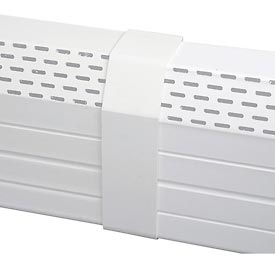Solving Hydronic Baseboard Issues with a Snap
How can NeatHeat’s covers take care of your hydronic baseboard issues effectively?
 Any residence owner will tell you that it takes immense amounts of time and effort to get a property looking good as often as possible.
Any residence owner will tell you that it takes immense amounts of time and effort to get a property looking good as often as possible.
From spring gardening and exterior work to painting and replacing parts of the interior and every nook and cranny in-between, there’s a lot of work to be done in building renovations. When a residence owner aims to accomplish a renovation, they have three goals: first, they want the renovation to be as inexpensive as possible.
Renovations are guaranteed to eat up quite a bit of funds, so minimizing funds by getting the best deal possible is important. Second, renovations take time, and time spent restoring parts of a residence is valuable, so it’s important to find the best way to get a renovation done that doesn’t eat up too much time.
The third and most important factor with renovations is longevity: you don’t want to spend any time or money on doing work that only lasts a few months before needing that renovation again.
Running into Hydronic Baseboard Issues
The frustration with baseboard heaters is that 99% of renovations you can do with your heaters involves all three of these issues in one. Baseboard heaters are not easy to maintain and take apart, meaning it takes time to take apart everything to get the pieces cleaned off or repainted.
Since baseboard lines most of the walls in a residence interior, prices tend to add up if you decide to replace the parts to save on time instead of taking the time to repaint or clean.
The worst of hydronic baseboard issues is the fact that no matter how much work you put into your baseboard heaters, they’re guaranteed to look abysmal within a few months and require that renovation again. The heaters get rusted, dented, and tend to look very outdated in a very short period of time, frustrating residence owners everywhere.
They need a good way to solve their hydronic baseboard issues, and they can if they look into getting some kind of baseboard heater cover. With the right cover, you don’t have to worry about the shape of the heater, but the covers, which can be designed in such a way that they are much easier to maintain.
Using NeatHeat’s Baseboard Covers
A good cover can also be an easy do-it-yourself job, making renovations quick and easy as well as cost-effective in the long run. This is where NeatHeat comes into play, solving hydronic baseboard issues for home owners and residence owners everywhere.
With NeatHeat’s specially designed covers, you don’t have to worry about rusting, denting, chipping, or fading in color, because NeatHeat covers are made of a composite polymer.
They are specially designed and heat treated to not yellow or to offset gas well below the operating temperatures of a home, meaning they are a much more permanent option versus repainting your heaters.
How does NeatHeat Work?
Plus, NeatHeat covers act as an insulator, providing heat flow through your home via convection instead of conduction; some homeowners have even stated how they feel heat coming through the heaters better with NeatHeat covers on.
NeatHeat covers are designed to be the ultimate do it yourself tool, as every piece installs and uninstalls with a snap and every potential issue is thought of and accounted for. For instance, pieces that are too long are easily cut with a hack saw or chop saw and pieces too short can be connected together with a splice plate.
Plus, if your covers ever do get dirty or you decide to repaint them, household cleaners and spray paint will do the job for you respectively. NeatHeat is designed to be the ultimate solver of your hydronic baseboard issues; to learn more, click here.
